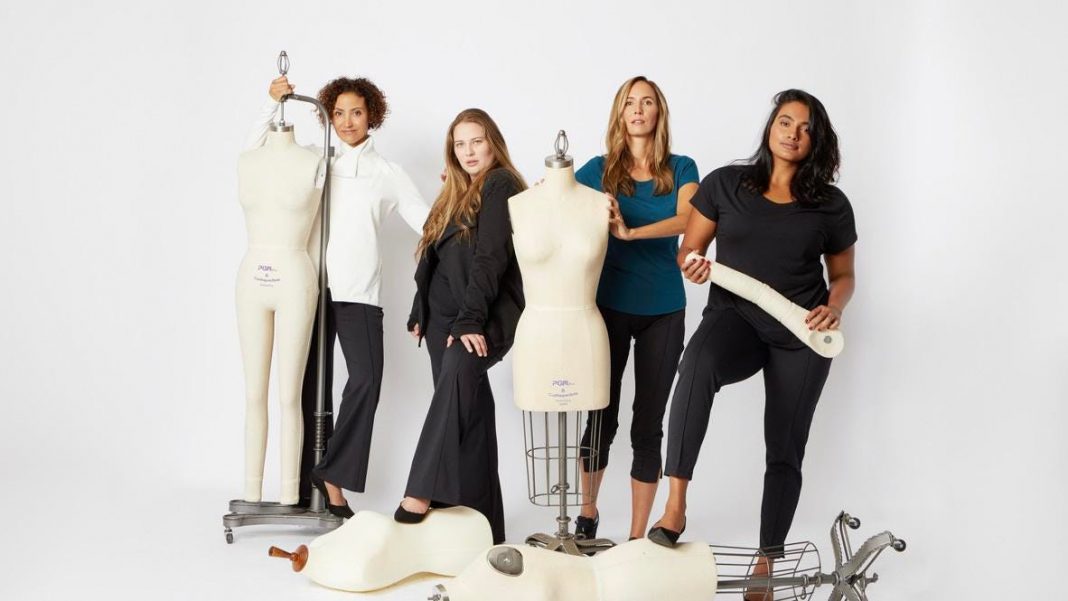RedThread is breaking down traditional beauty standards by eliminating sizes.
RedThread
As ongoing conversations around climate change, carbon footprints and sustainability consume business decisions, the fashion industry is continuously impacted. Every year, more consumers are conscious about a brand’s ecological health, a term used concerning both human health and the state of the environment. The industry has even created The Fashion Pact, a global coalition of fashion and textile companies. It includes the companies’ suppliers and distributors, all committed to a common core of key environmental goals in three areas: stopping global warming, restoring biodiversity and protecting the oceans.
The global ethical fashion market is expected to reach $8.3 billion in 2025 from $4.67 billion this year. However, the Environmental Audit Committee found that 15% of all clothing fabric alone is wasted at the cutting stage of production. One of the more recent reports from the EPA states that over 11 million tons of textiles wind up in the landfill each year. Although more prominent icon brands have started gearing practices toward sustainable fashion, smaller companies are stepping up to fill in the gaps and drive awareness.
Meghan Litchfield, founder and CEO of RedThread, is not only assisting in the sustainable fashion movement but is also addressing the issue of body shaming. As a custom-fit clothing company, it uses its patent-pending process that combines mobile scanning measurement technology with the traditional art of tailoring. As a result, less fabric is used, and women don’t worry about what size they are wearing—they are wearing their perfect size.
“Bigger brands,” Litchfield explains, “what they do is they produce hundreds of thousands of sizes. Then they put them on a boat and ship them over here. The half that doesn’t sell ends up getting destroyed or incinerated, or they’re just wasteful. So, it’s really the overproduction that creates a lot of waste. And for us, every piece is made on-demand. So there is no waste, there’s no overproduction. So every piece we make is worn. There are very few returns. The ones we do get, we actually alter and wash the piece and donate it to a woman at Dress for Success who just landed a job.”
Meghan Litchfield, founder and CEO of RedThread, created a company that celebrates women of all body … [+]
RedThread
Litchfield began her career as a consultant at Deloitte. Then, wanting to gain experience in consumer behaviors and retail, she moved to London, conducting market research. After a couple of years, she decided to work back in the U.S. at the Gap and the Banana Republic. She then transitioned to an e-commerce role where her job was to frame every piece of art sold.
GoPro eventually recruited Litchfield to lead its e-commerce and digital efforts. During her tenure, she was a part of the company’s growth into the billion-dollar club and the launch of its public IPO.
Litchfield always had an entrepreneurial mindset. But, from pet hotels to online jewelry markets, none of her ideas were enough to leave the corporate setting. After turning 40 years old, she decided it was now or never. She looked at markets and sought out the white space to find an opportunity aligned with her passions and make a difference.
“I personally was feeling bad about trying on clothes that didn’t fit me,” she comments. “I have this tech background now. So I was like, how can we solve this with technology to help women feel better? So that was my first goal. Then the second [goal] was that the apparel industry is killing the planet. So how can we do this in a sustainable way that is better for the planet?”
Early on in building out the company, like other entrepreneurs, Litchfield assumed all business roles. While she aggressively pitched investors, she also was testing fabrics and answering the phones. “One of our investors was a customer who called our 800 number,” she begins to laugh. “I was still answering the phone at the time. She’s like, ‘Hi, I’m an investor, and I’ve ordered your products. All my friends have ordered them. I’d like to talk to Megan, the CEO.’ I was like, ‘Ok, hold on one second.’ I slightly changed my voice and said, ‘Hi, this is Meghan.’”
RedThread makes custom-fitting easy through three easy steps using 3D Look technology. The company’s … [+]
RedThread
Early on, through sales, angel investors and family and friends, Litchfield raised over $1.5 million, which enabled her and her team to invest in quality fabrics and the 3DLook technology that integrates its technology into RedThread’s platform.
At this point, RedThread is customer-funded. However, in the beginning, Litchfield planned out that she probably wouldn’t be able to pay herself for three years. “That’s emotionally hard,” she shares. “Even if you plan for it financially, it’s hard to get up for work every day being like, ‘ok, I’ve personally made zero dollars.’ But you have to believe in what you’re building and that it’s just a short-term scenario, which it ended up being for me in the end.”
As Litchfield continues to expand RedThread and transition in her role, she focuses on the following essential steps:
- Don’t let age stop you from going after what you want. Look at it as though the older you are, the more experience you have to make your idea work.
- Surround yourself with people who will champion you.
- Make sure your actions align with your mission and purpose.
“Going into a fitting room and trying on ten different pairs of pants that don’t fit you always makes you feel that there’s something wrong with your body,” Litchfield concludes. Our mantra is that it’s not you; it’s the clothes. It’s the sizes that are broken. When you slip on a pair of pants that fits you perfectly in all the right places…it just makes a whole difference in your day, your confidence, and how you take on the world.”




